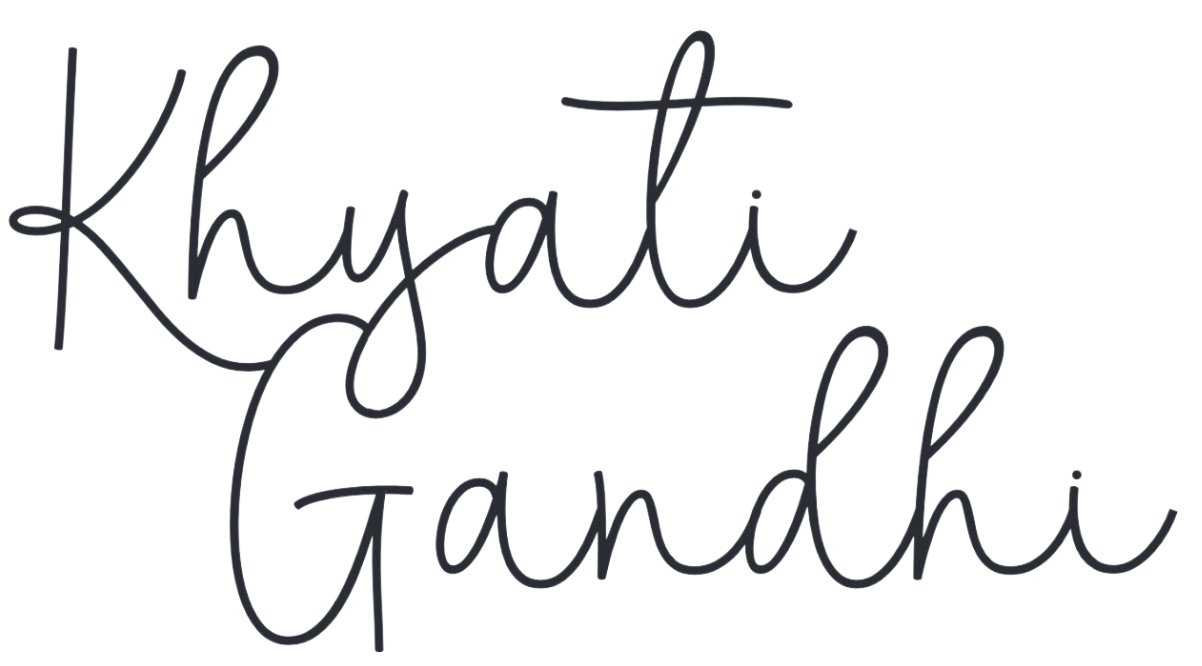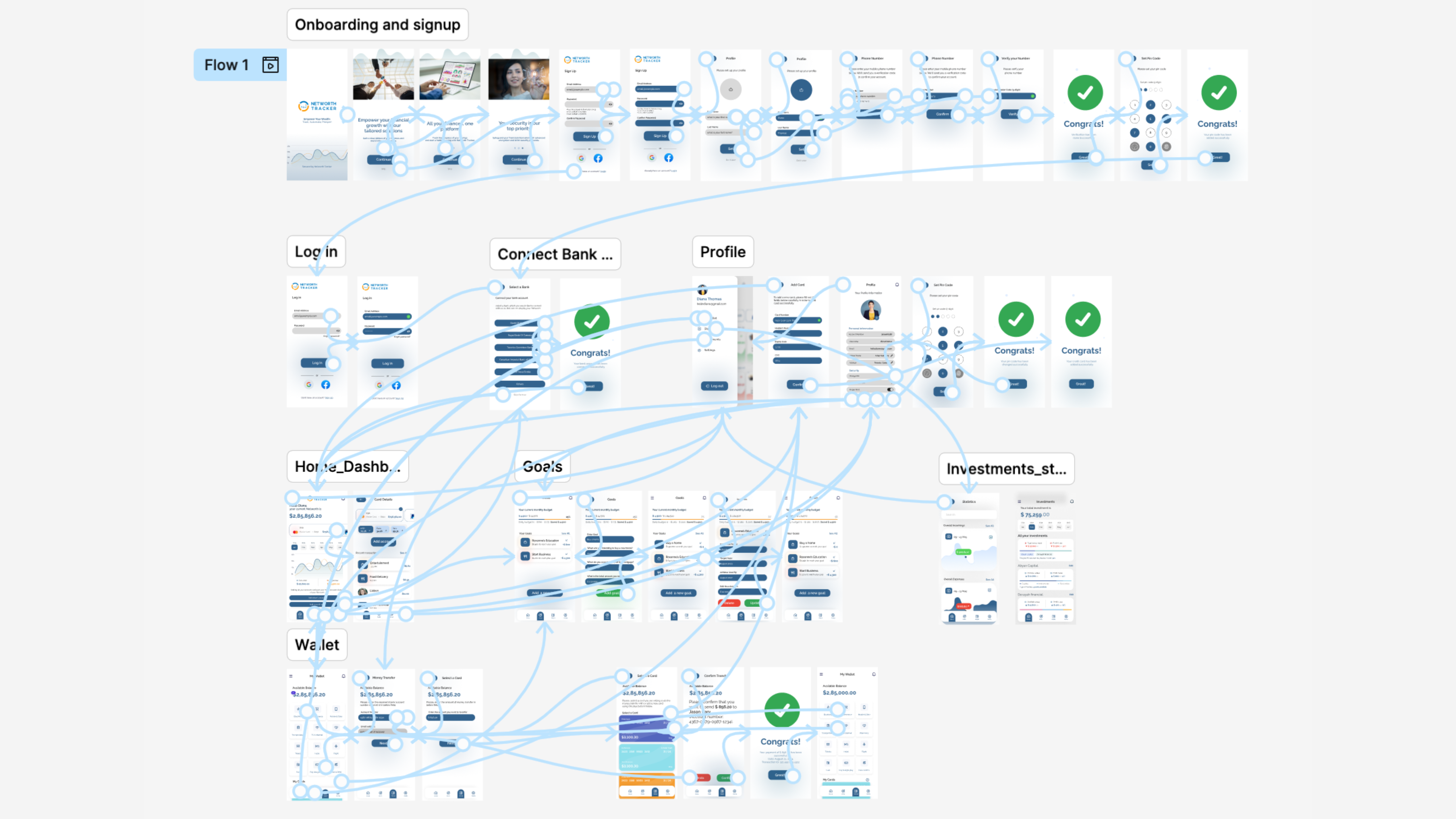Problem Statement
People find it difficult to track their personal finances across multiple accounts. They need a simple solution to understand their financial health, set goals, and make informed decisions.
Goal
Our goal is to empower users to take control of their personal finances by providing a simple, intuitive app that simplifies financial tracking and goal setting.
Outcome
Users will have a clear understanding of their personal financial health and be empowered to make informed decisions to achieve their financial goals.
Design Process
The design process is a cyclical journey of Discover, Define, Ideate, Design, Test, and Refine, where I continuously was refining solutions through user feedback and insights.
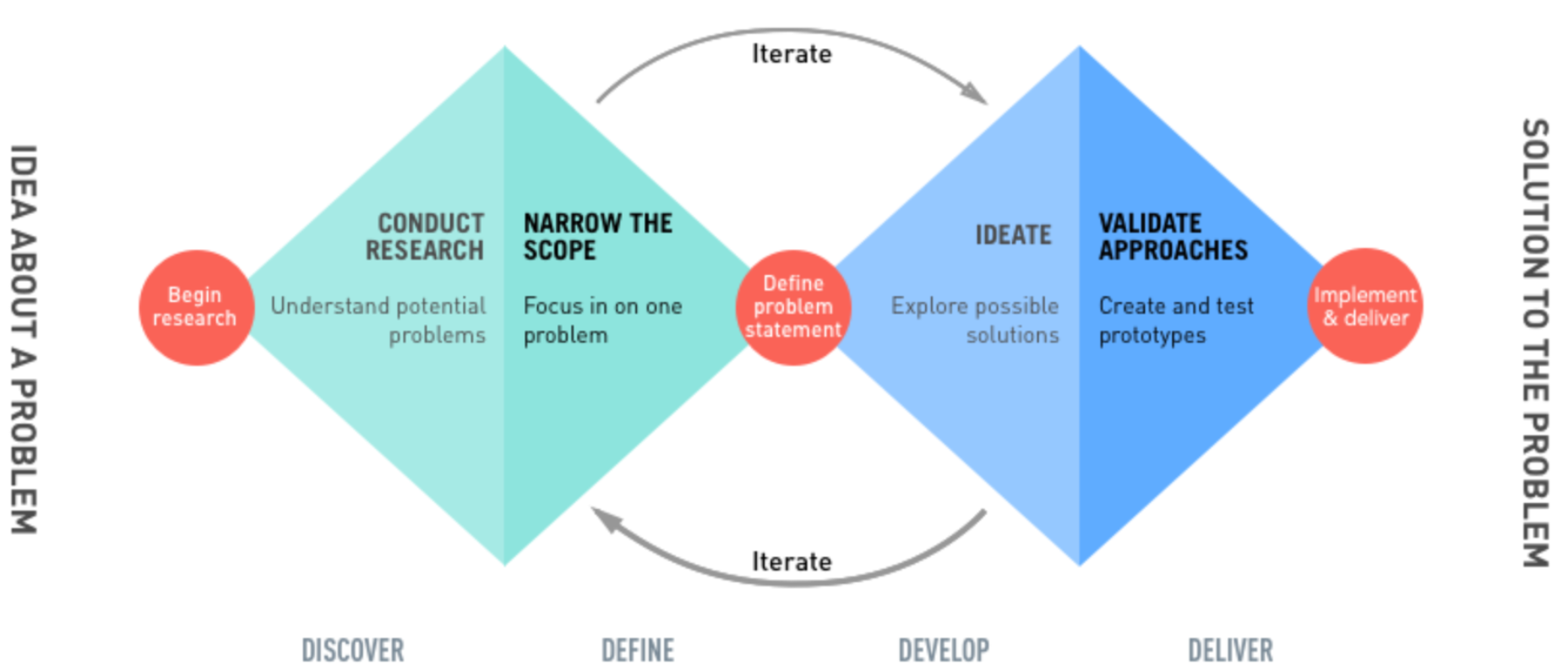
Discover
Many people struggle to get a clear picture of their overall financial health. They juggle multiple accounts, lack a central location to track assets and liabilities, and find it difficult to translate their net worth into actionable budgeting and financial planning. This can lead to feelings of overwhelm, hindering progress towards financial goals.
What Is Networth Tracker?
Networth Tracker is a financial management tool that automates tasks like tracking expenses, managing investments, and analyzing financial data. It provides real-time insights to help users make informed decisions and achieve their financial goals.
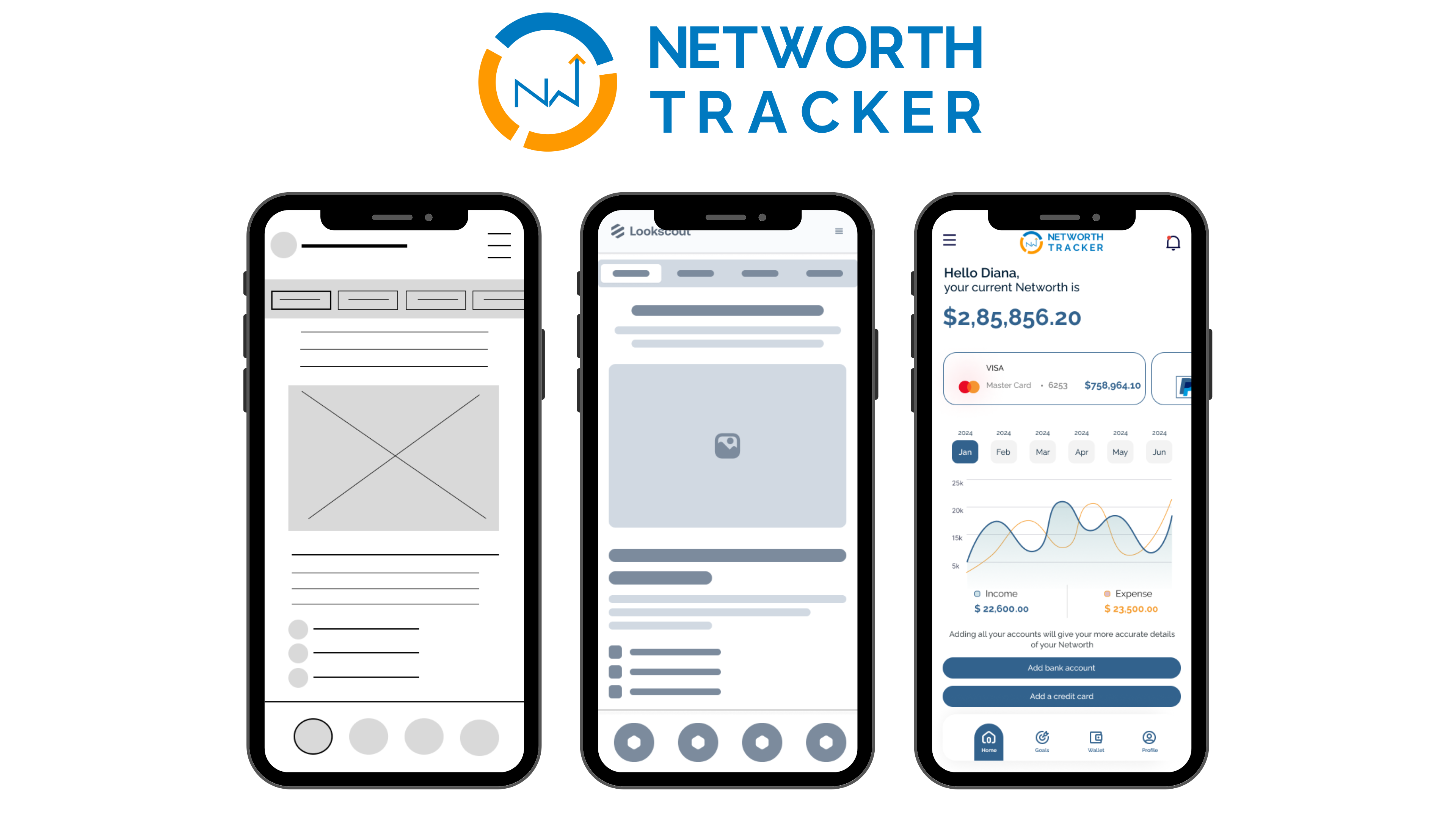
Our Competition
Neontra, Fold.money, IND money are some of the potential competitors for Networth Tracker.
I researched for apps and websites that allowed users to link their bank accounts and provided a consolidated view of the users finances. This would help them see their assets and liabilities in one place and help users manage their finances.
To further understand my competitive landscape, I conducted a SWOT analysis to identify our strengths, weaknesses, opportunities, and threats.

Executive Summary
Potential Solutions
Business Goals
Success Metric – Phase 1
User Research
Research Goals
- User Needs: What do users track and how?
- User Behavior: How do users make financial decisions?
- User Pain Points: What are the frustrations in financial management?
- User Motivation: What are users’ financial goals and motivations?
- Barriers to Adoption: What prevents users from using a Networth Tracker?
- Feature Prioritization: What features are most valuable to users?

Insights
- Simplified Tracking and Visualization: Users need intuitive tools to easily track their personal finances and visualize progress.
- Investment Education: Younger users require guidance on investment options.
- Seamless Integration: A centralized platform that integrates with existing tools is preferred by most users.
- Robust Security and User Control: Strong security and user control over finances are essential.
Define
By analyzing user research data, we created detailed user personas that represent the diverse needs and behaviors of our target users, allowing us to empathize with their experiences and inform our design decisions.
Through the creation of comprehensive user personas, we gained a deep understanding of our users’ motivations, goals, and frustrations, enabling us to design solutions that are tailored to their specific needs.
User Personas And Journey Maps
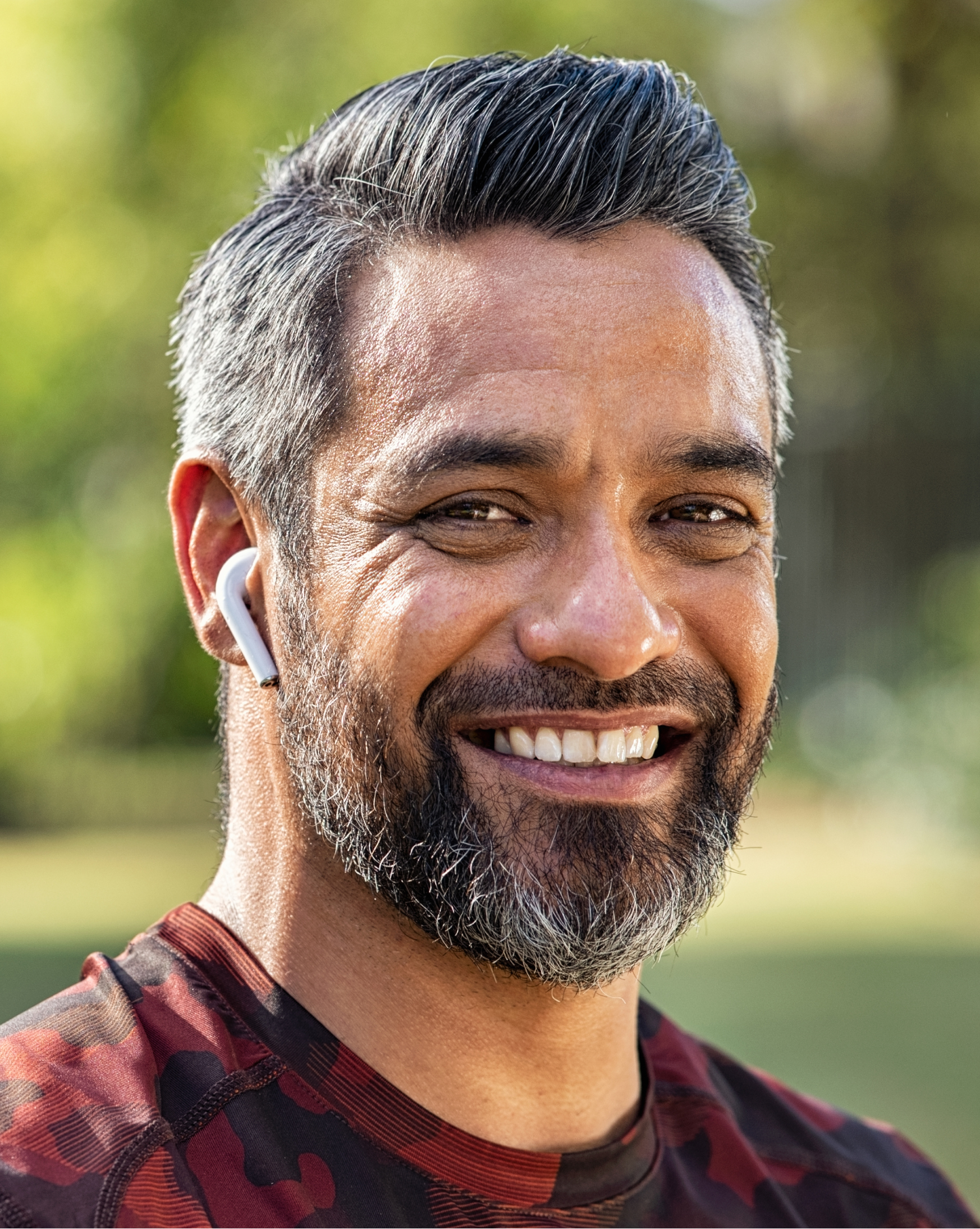
“Security is everything for me. If there’s a tool that can give me a clear picture of my net worth, help me plan for retirement and the kids’ college…well, that would be a game-changer. The more control I have over my financial future, the better I sleep at night.”
DAVID
Meet David, a 48-year-old male project manager in a Chicago suburb. He prioritizes financial security for his wife two children (ages 16 and 18). He’s a meticulous planner who takes a long-term approach to finances.
Goals & Needs
- Secure and comfortable retirement for himself and his spouse
- Providing his children with the opportunity for a quality education
- Leaving a financial inheritance for his children
- Planning for unexpected expenses and emergencies
Frustrations
- Balancing short-term needs with long-term goals
- Finding a net worth tracker app that integrates seamlessly with his existing financial tools and offers a secure platform for his financial data
Personality
- Organized and detail-oriented
- Responsible and takes a long-term approach to financial planning
- Values stability and security for his family
Interests
- Spending time with family
- Volunteering as a coach for his son’s baseball team
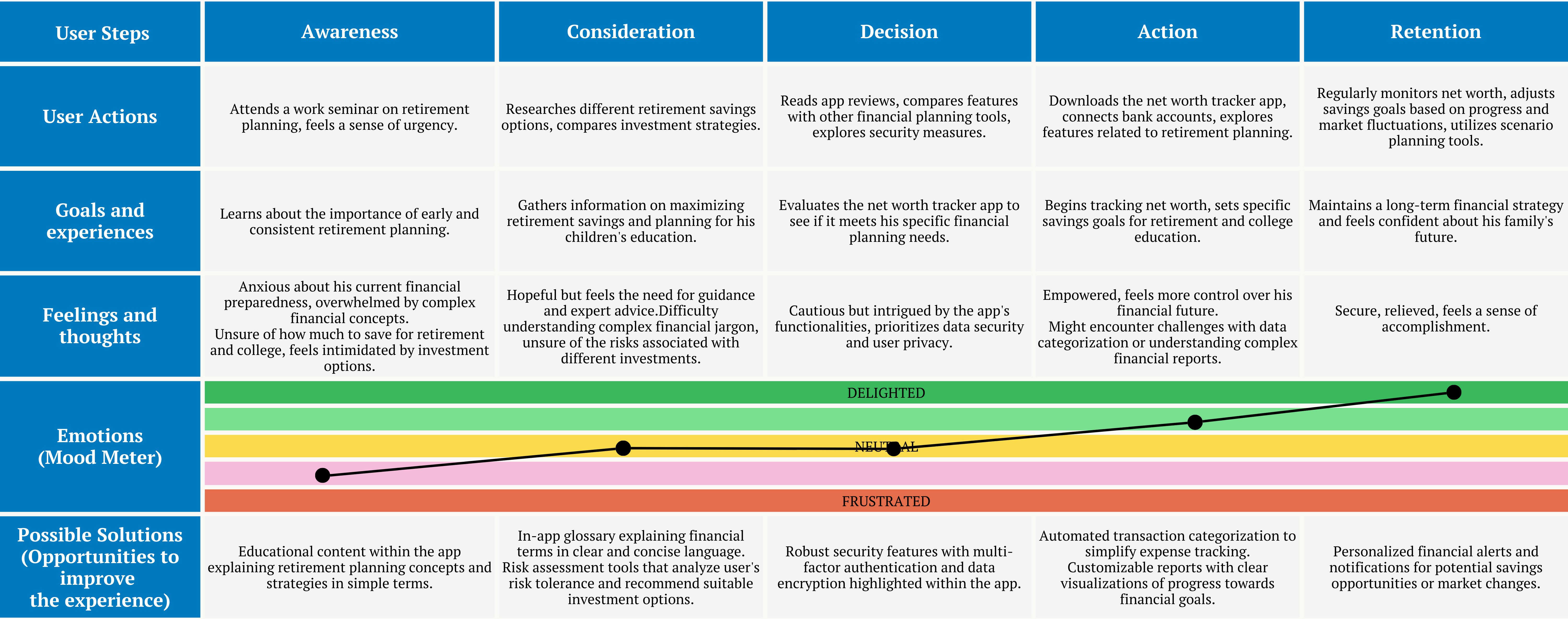

“Budgeting is cool, but I don’t want to feel chained to spreadsheets. I just want a simple way to track my money and see if I’m on track for that epic backpacking trip. I am highly motivated by having complete financial freedom.”
SARAH
Meet Sarah, a 30-year-old female who is a freelancer graphic designer in a Austin, Texas. She prioritizes experiences over possessions. She values living a flexible, adventurous life and dreams of traveling the world full-time.
Goals & Needs
- Financial freedom to travel the world and pursue creative passions
- Avoiding debt and maintaining a healthy emergency fund
- Achieving a comfortable lifestyle without being tied down to a traditional job
Frustrations
- Maintaining a healthy emergency fund
- Debt avoidance and responsible credit card use
- Finding a net worth tracker app that’s both user-friendly and aligns with her unique financial goals
Personality
- Financially responsible but not overly concerned with long-term planning
- Tech-savvy and comfortable using financial apps
Interests
- Minimalism and Simple Living
- Traveling
- Social connections
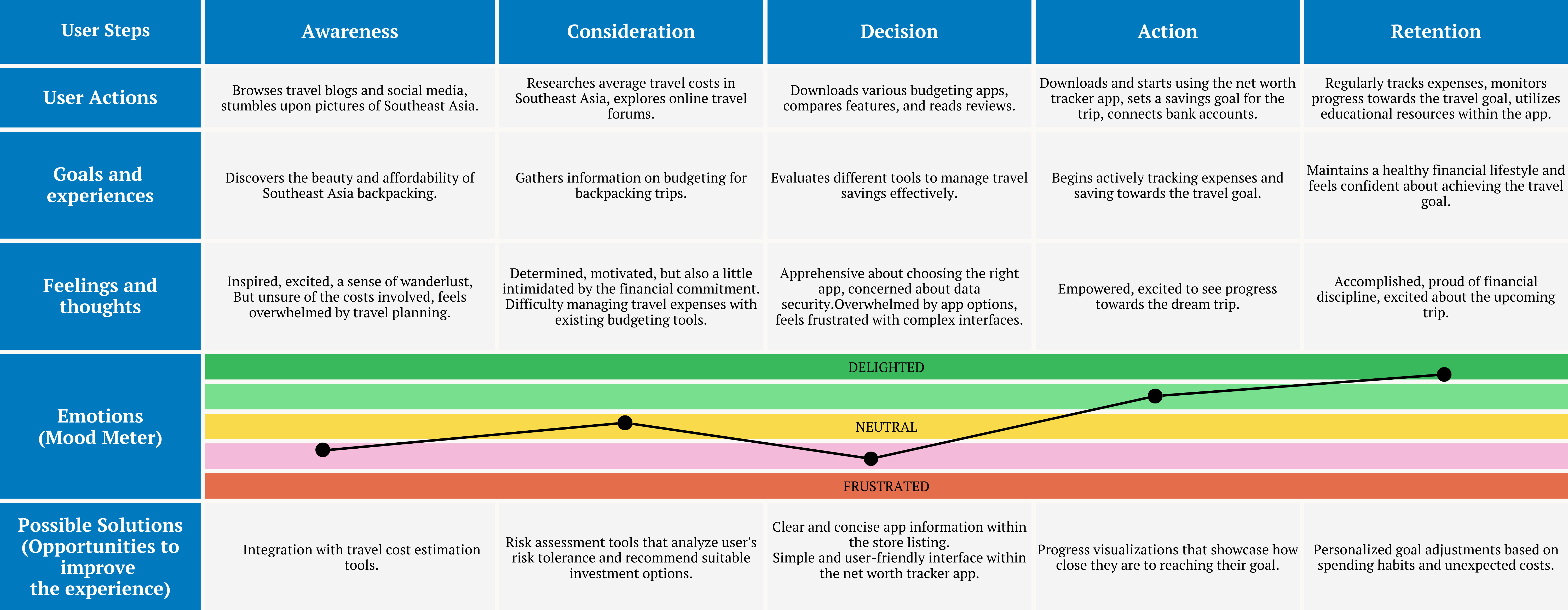
User Flows
Task 1: Creating an account and Understanding Networth
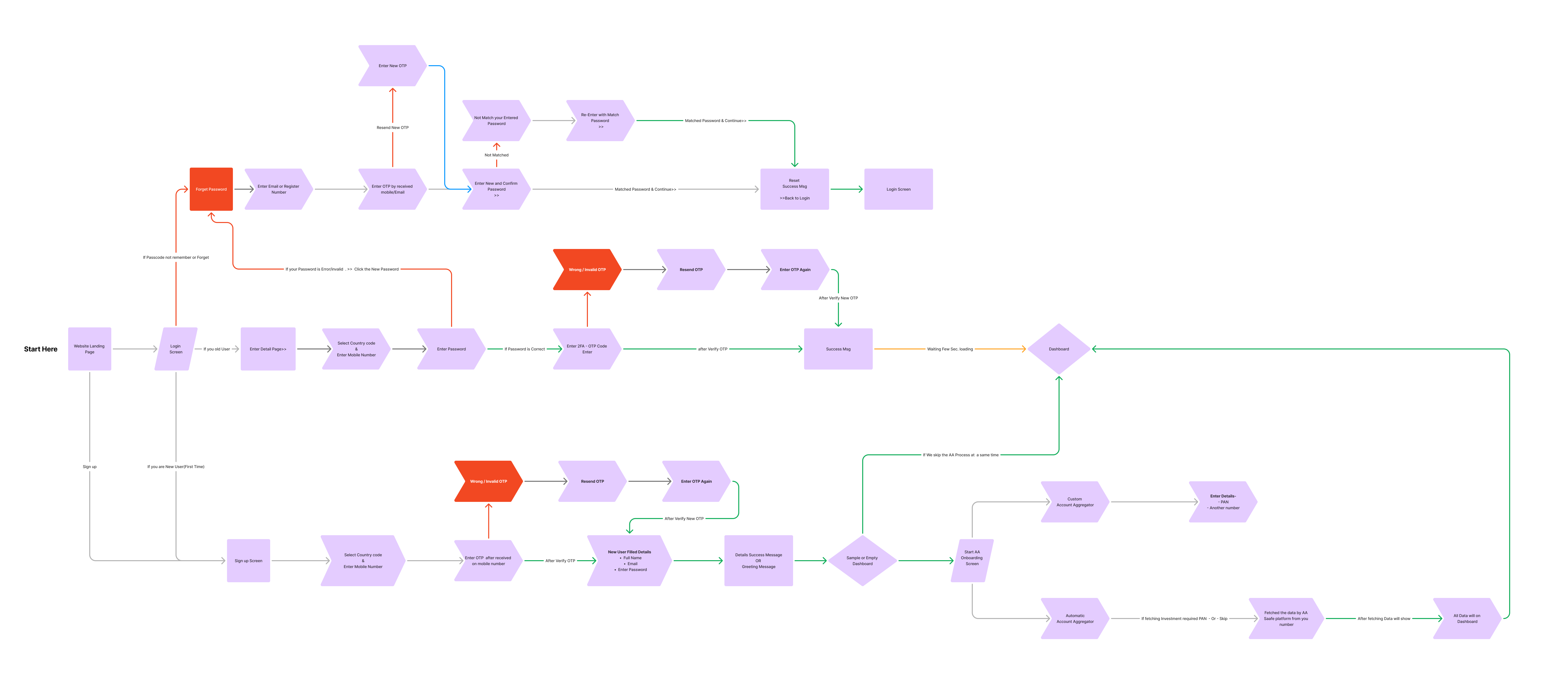
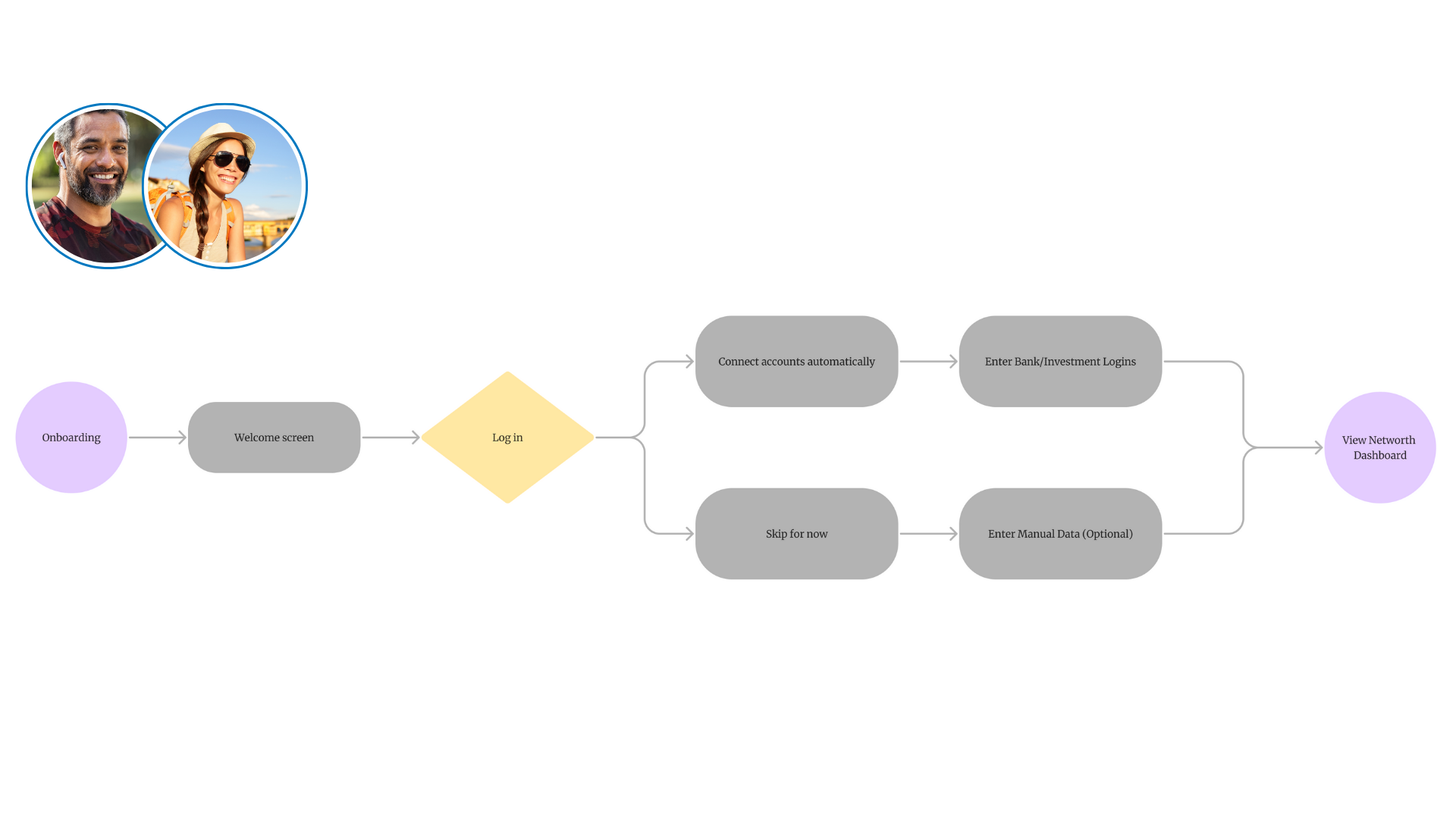
Task 2: Monitoring Progress Towards Goals

Task 3: Setting Up Retirement Savings Goals

Site Map
I developed this sitemap by carefully considering user needs, information architecture, and technical feasibility. Through user research, competitive analysis and iterative testing, I organized the content and navigation structure to ensure a seamless user experience. The sitemap prioritizes key features and information, making it easy for users to find what they need.
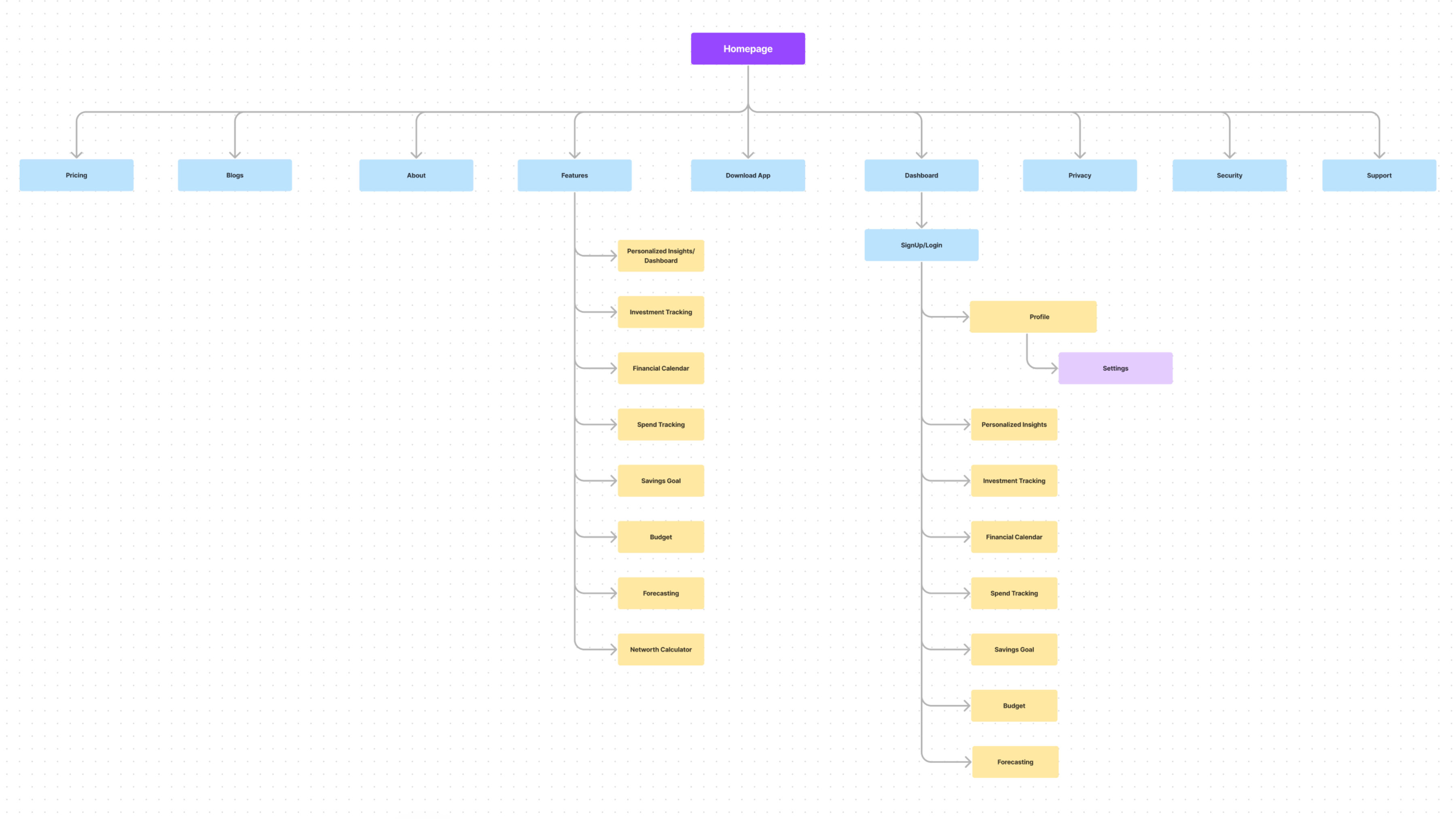
Ideate
The ideate phase began with sketching paper wireframes to quickly visualize the app’s layout and information hierarchy. These sketches were then translated into digital wireframes and lo-fi prototypes to test the user flow and interaction design. High-fidelity prototypes were developed to refine the visual aesthetics and overall user experience.
Wireframes
Home Page
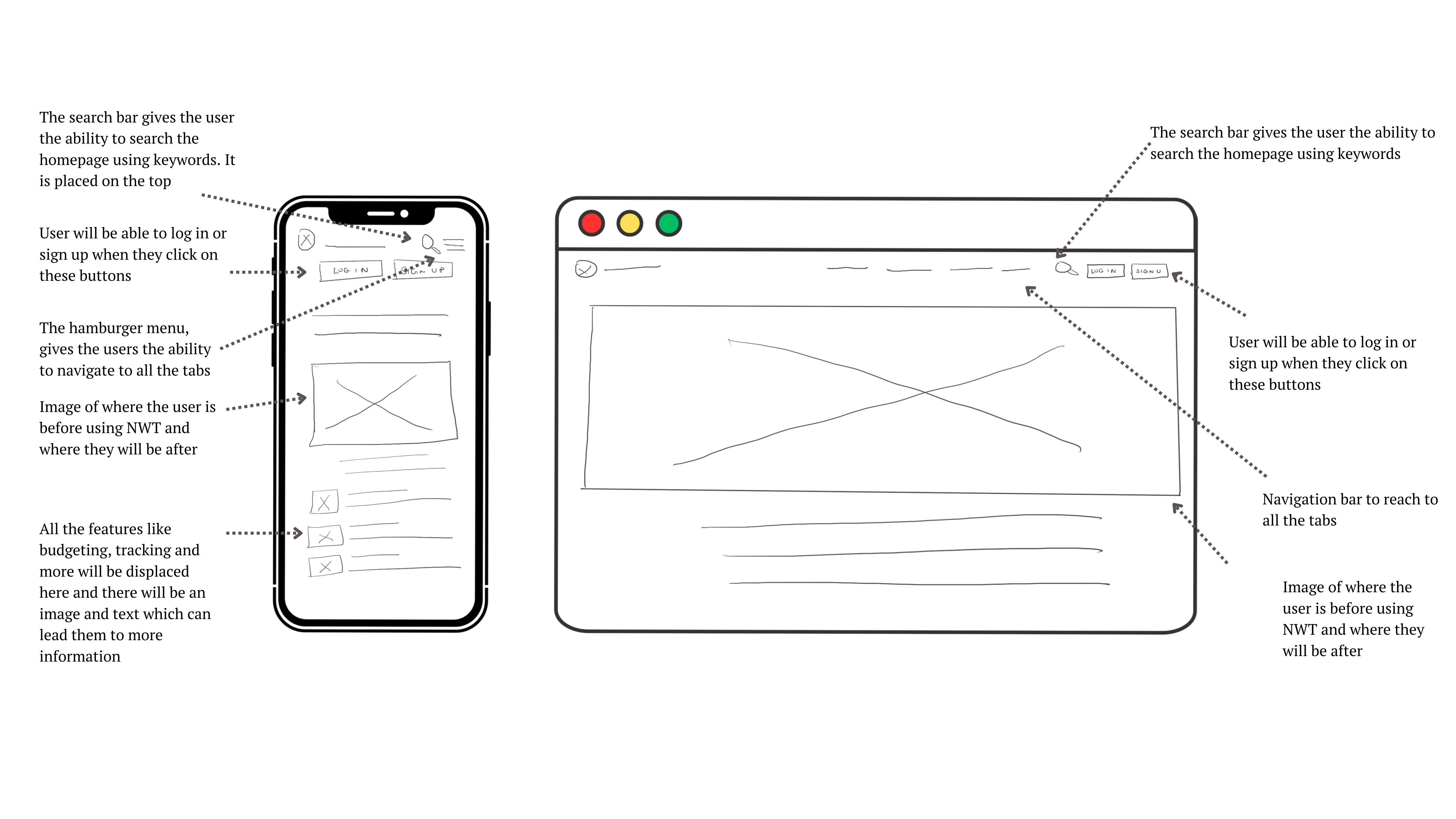
Click here to explore the detailed design rationale for home page wireframe.
Dashboard
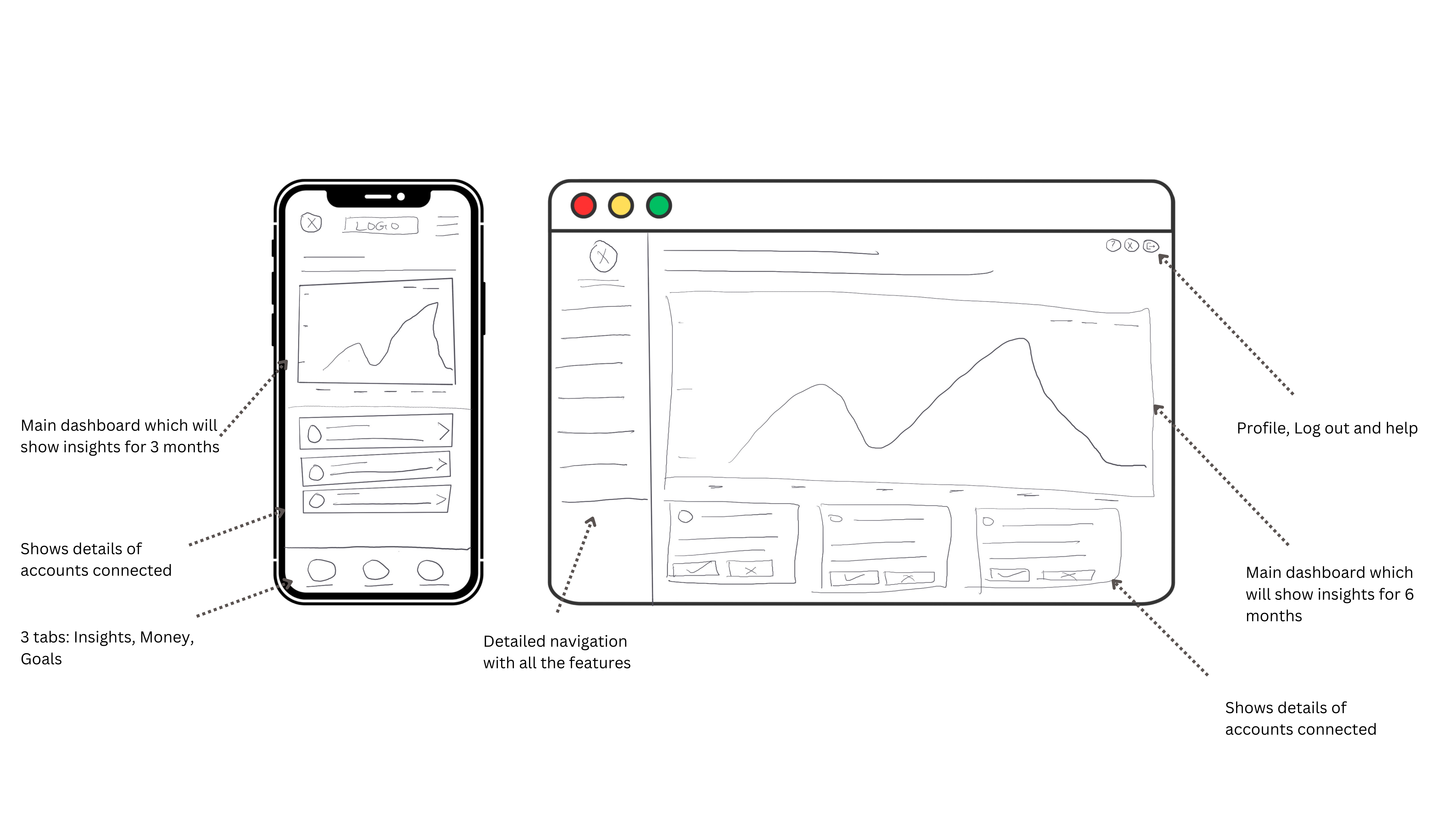
Click here to explore the detailed design rationale for the dashboard wireframe.
Lo-Fidelity Prototype


To bridge the gap between the low-fidelity prototype and the high-fidelity design, I conducted usability testing on the low-fidelity prototype to gather valuable user feedback. This feedback, combined with insights from user research, helped me identify key areas for improvement. I collaborated closely with the engineering and production teams to ensure technical feasibility and align the design with development constraints. Finally, I translated the design into a visually appealing and user-friendly high-fidelity prototype, which was further validated through rigorous user testing.
To expedite the design process and ensure consistency, I leveraged Material UI’s pre-built components and customizable theme system. This allowed me to efficiently create a visually appealing and user-friendly interface while maintaining brand identity and adhering to accessibility standards.
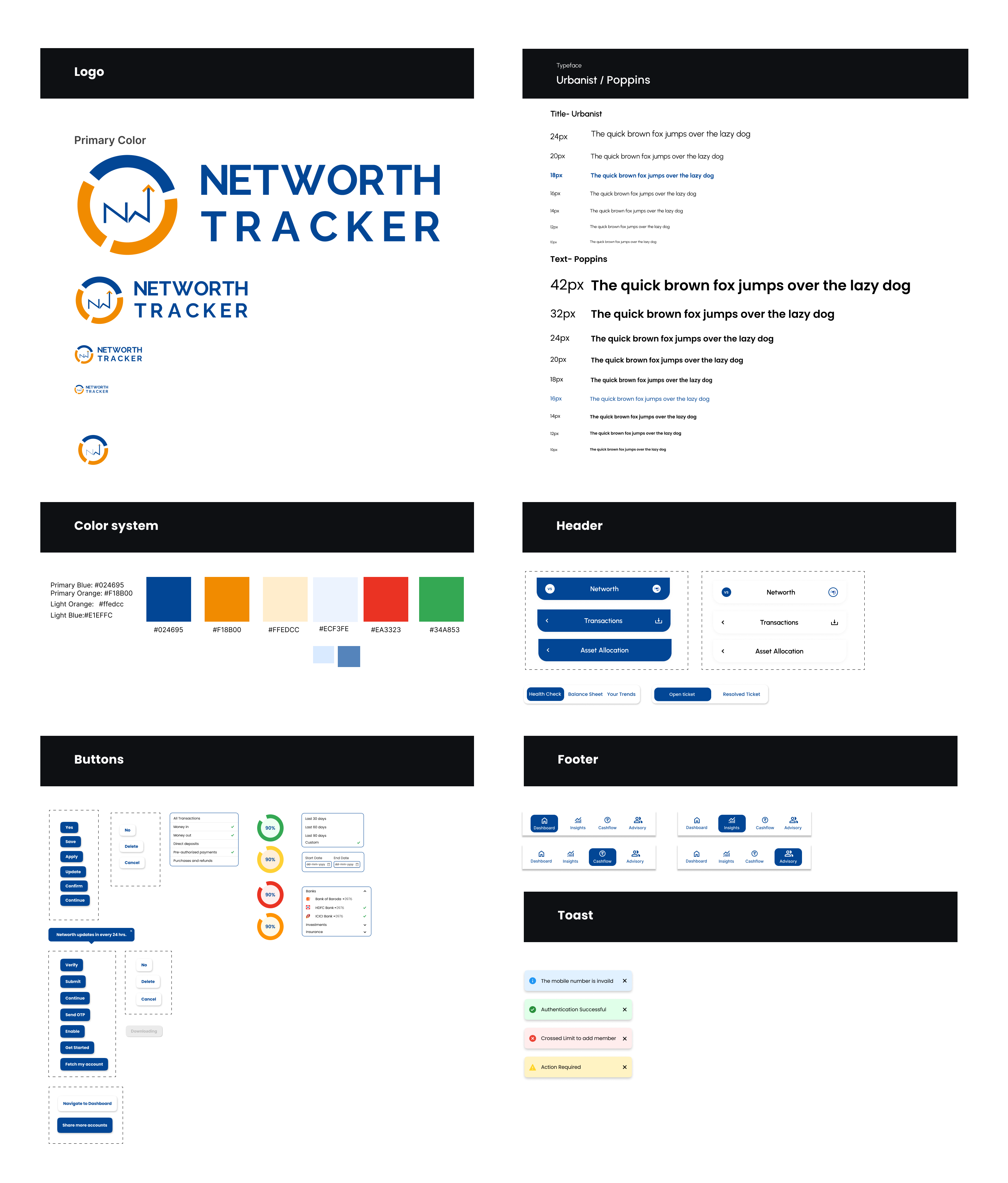
Test
The testing phase involved creating comprehensive usability test plans and recruiting participants to test the app’s functionality and user experience. We utilized preference testing and rainbow sheets to gather feedback on the app’s visual design and information architecture.
Test Participants

To efficiently categorize and identify recurring themes in the qualitative feedback from usability testing, we employed rainbow sheets to organize data and affinity maps to visually cluster and analyze the insights.
Rainbow Sheet

Affinity Map
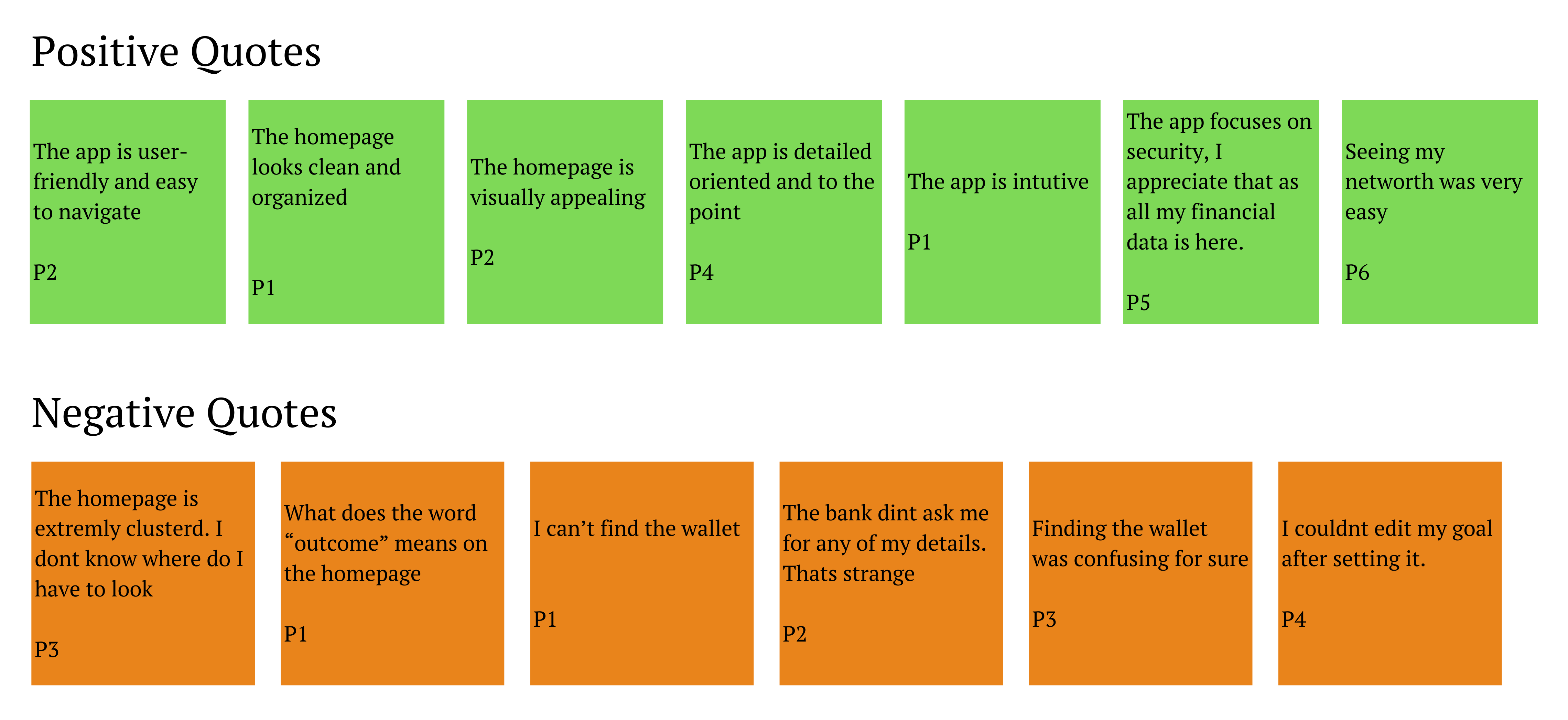
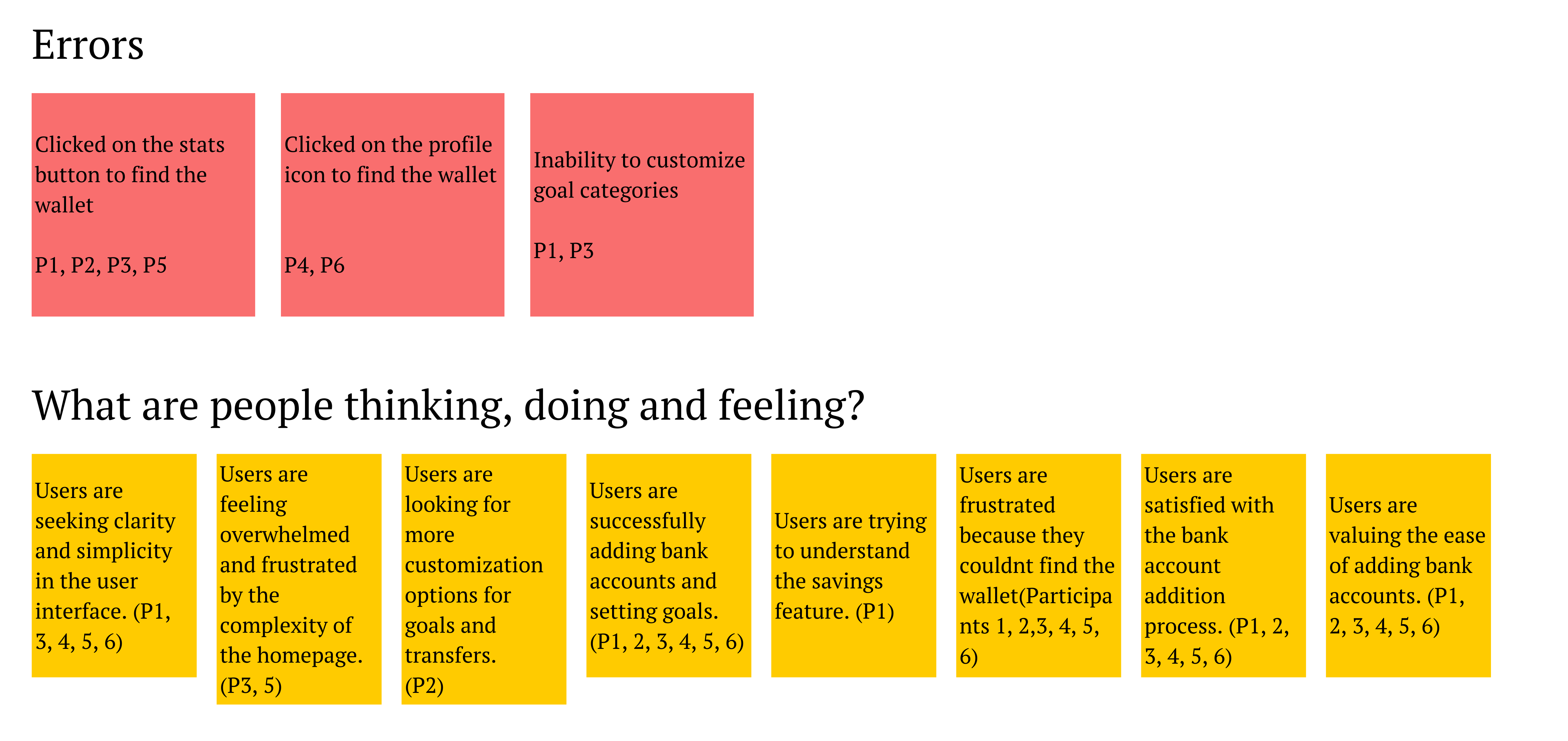
Preference Testing
By conducting preference testing, we aimed to identify the most visually appealing and user-friendly design options. This involved presenting participants with multiple design variations and gathering feedback on their preferences, enabling us to optimize the app’s overall aesthetic appeal.
Result
Most participants choose Option B, 70% choose the page with the changes.
The participants that selected Option B said the reason they chose this option was because:
- They could relate to it better
- They felt it was a safe website
- They could read the text better
- It looked like a serious app for personal finance
- Gave them a glimpse of what to expect

Refine
Based on the valuable insights and feedback gained from usability testing, we embarked on a refinement process to address identified issues and enhance the app’s overall user experience. Here are some of the changes:
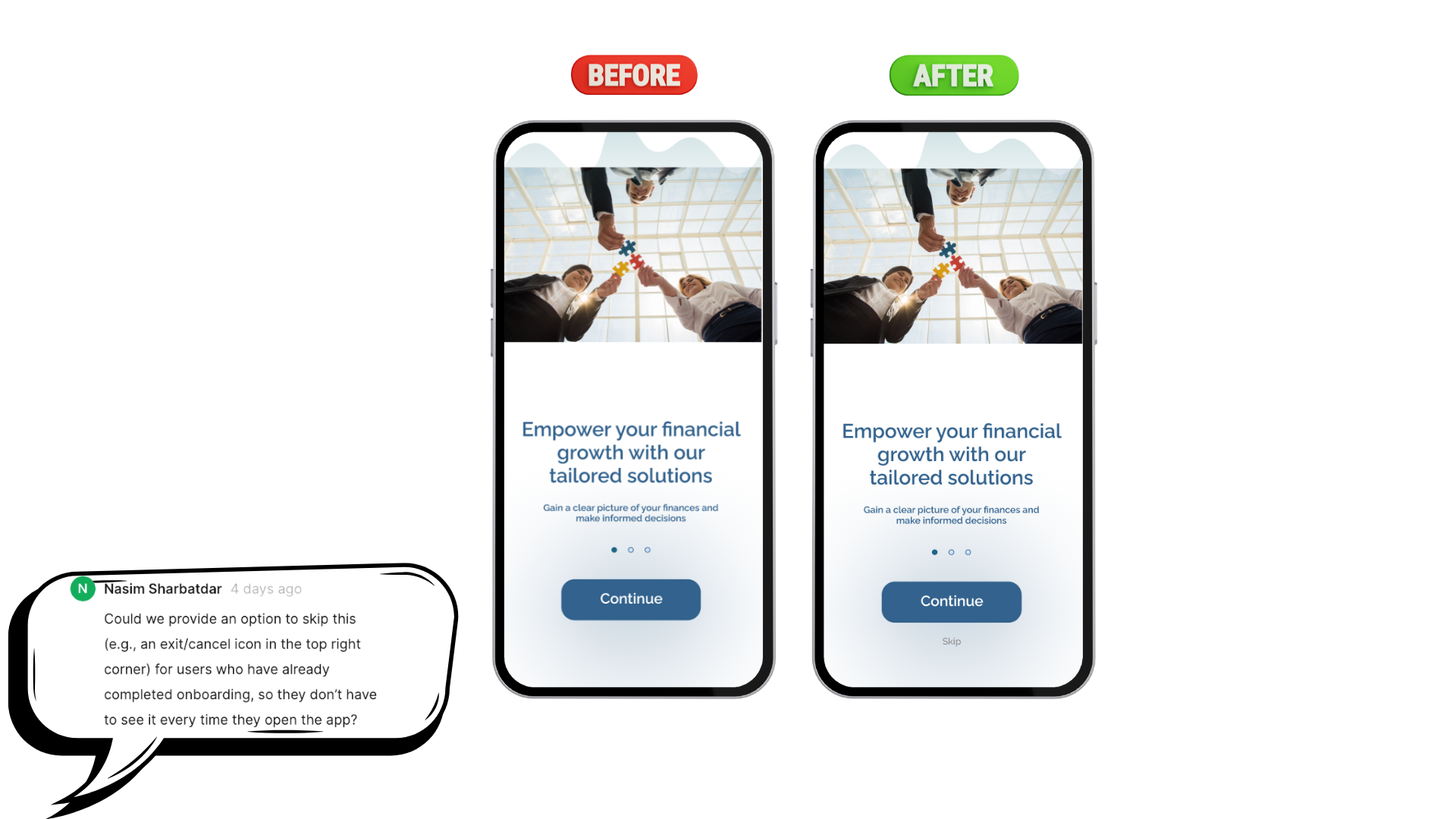
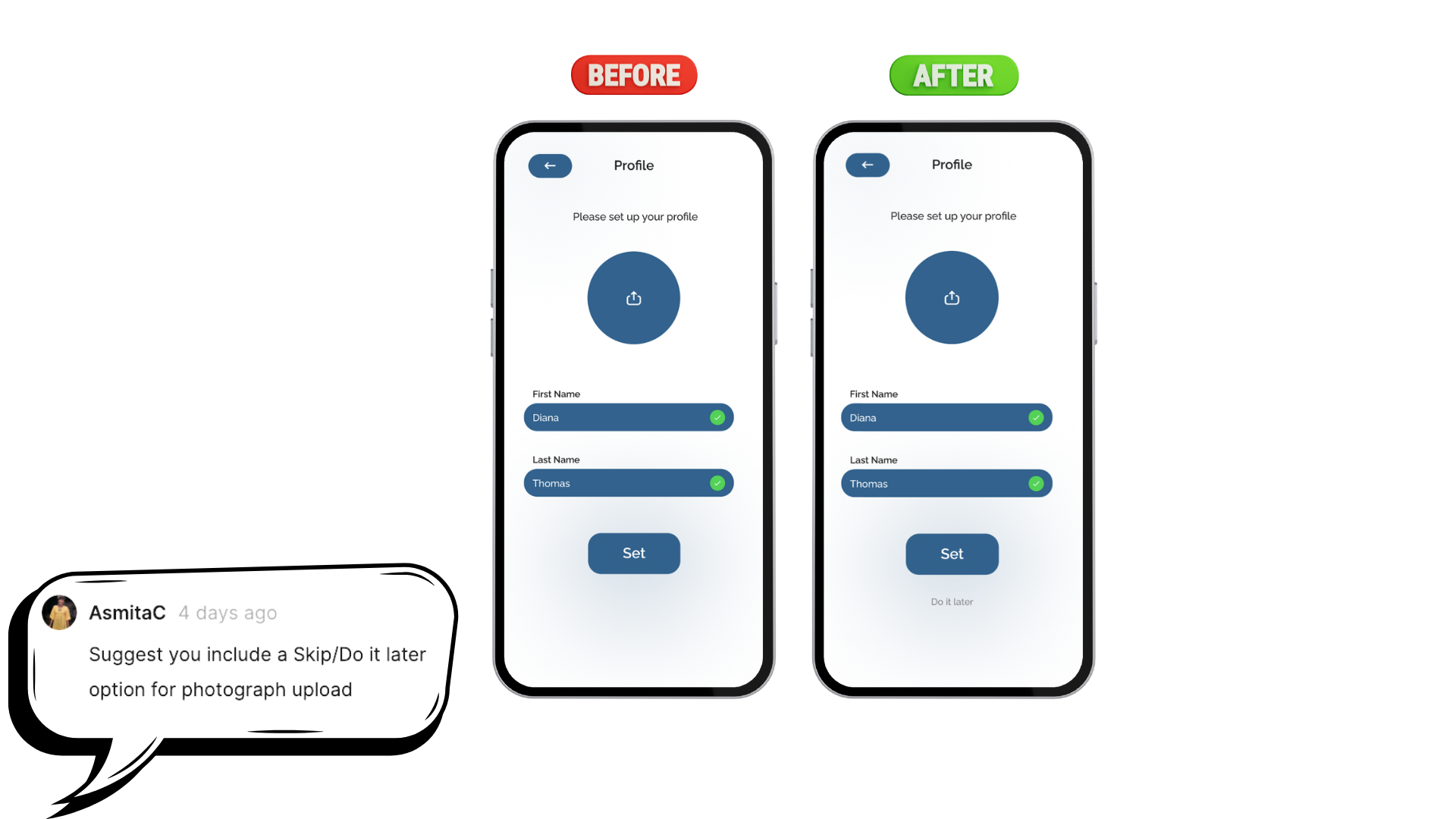
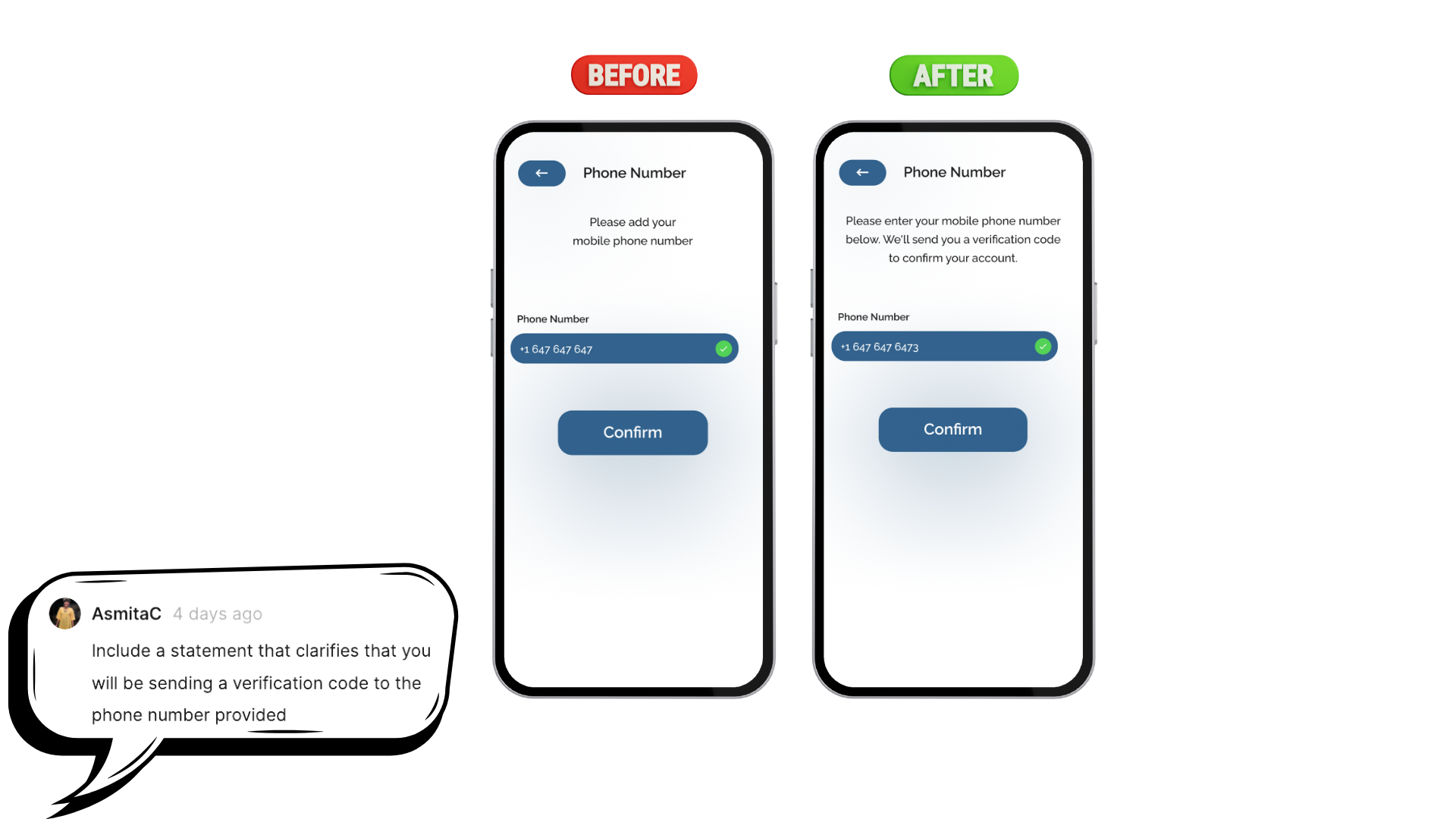
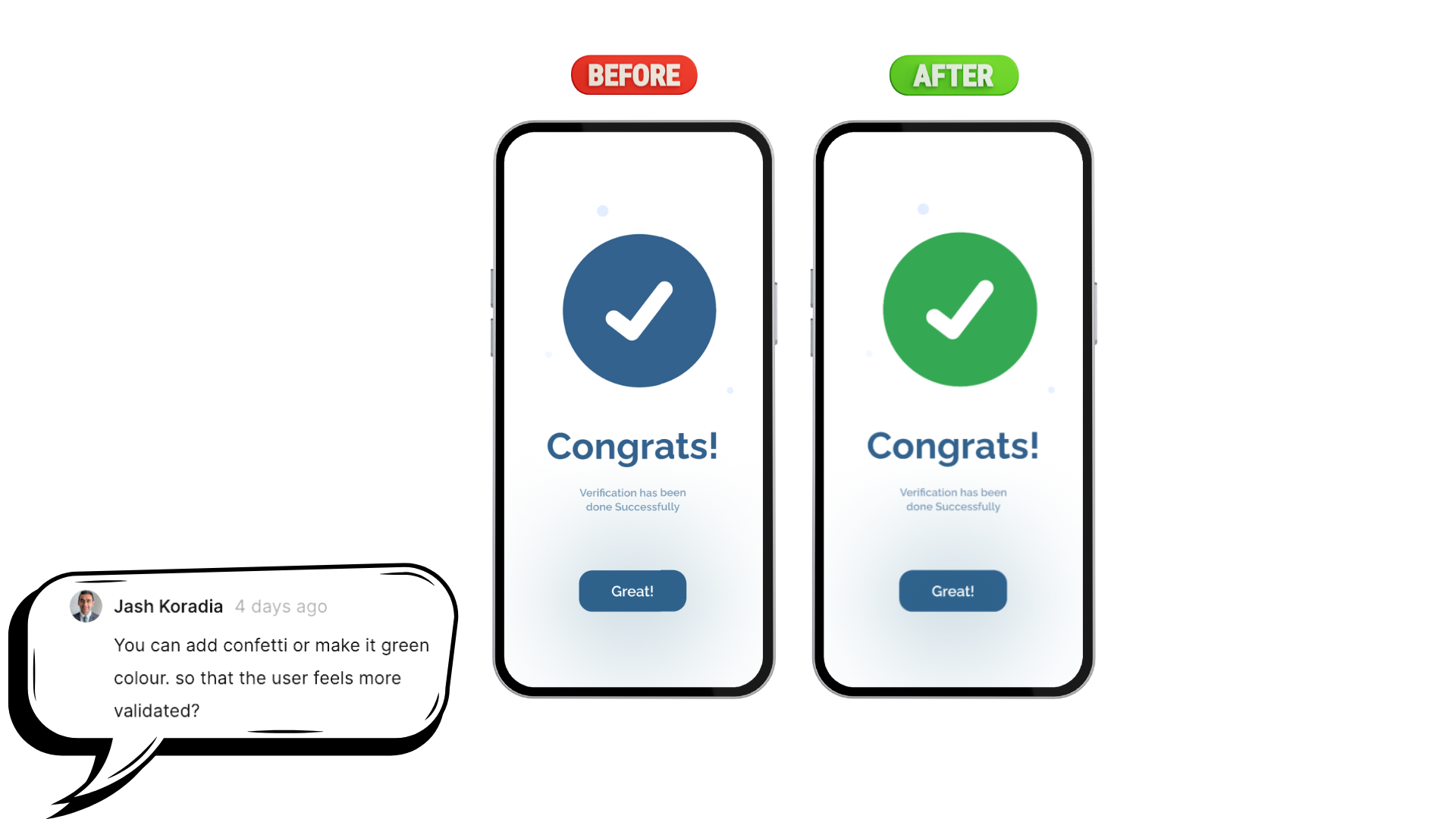


Learnings and Next Steps
Networth Tracker was designed to empower users to take control of their finances. To achieve this, we focused on creating a simple, intuitive, and visually appealing app.

The Design Process
- User Research: We began by understanding our users’ needs through surveys, interviews, and user observation. This research helped us identify pain points and create detailed user personas.
- Wire framing and Prototyping: We then created low-fidelity wireframes to establish the app’s basic structure and user flow. These were iterated upon and transformed into high-fidelity prototypes for visual design and usability testing.
- Usability Testing: We conducted rigorous usability tests to identify any usability issues and gather feedback on the app’s design and functionality.
- Iteration and Refinement: Based on user feedback, we iterated on the design to improve the user experience. This included making changes to the layout, navigation, and visual design.
Collaboration: The Key to Success
The development of Networth Tracker was a collaborative effort between UX designers, engineers, and product managers. This collaborative approach ensured that the final product was both user-friendly and technically feasible.
By focusing on user needs, iterating on the design, and collaborating closely with the engineering team, we were able to create a successful financial tool that empowers users to achieve their financial goals.
High-Level Planning for Future Iterations
Hypothesis 1: By integrating with investment platforms, we can provide more comprehensive financial data and personalized investment recommendations, leading to improved user engagement and satisfaction.
Hypothesis 2: Offering a premium subscription tier with additional features like advanced financial analysis tools and expert guidance will attract users seeking more sophisticated financial management capabilities.
Validation Methods:
- A/B testing: Test new features or changes against existing versions to measure user preferences and impact on key metrics (e.g., engagement, conversion rates).
- User surveys and feedback: Collect feedback through surveys and in-app feedback mechanisms to understand user satisfaction and identify areas for improvement.
- Usability testing: Conduct regular usability testing sessions to observe user behaviour, identify pain points, and gather insights on how users interact with the app.
Version 1.1.0
We are constantly iterating based on user testing and feedback. This video showcases version 1.1.0
Tool Kit

Lets get to work
I appreciate you taking the time to explore my work. I’m excited to learn more about your project and how I can help.
Feel free to reach out anytime.
© 2024 All rights reserved. Designed by Khyati Gandhi
